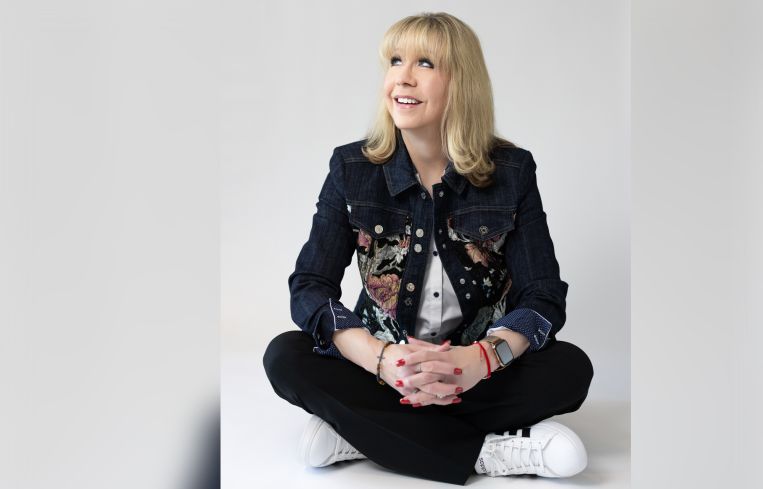Rising to the Top
Laura Khouri on her journey from secretary to president of Western National Property Management
By Brian Pascus October 27, 2025 6:30 am
reprints
Laura Khouri is the president and chief operating officer of Western National Property Management (WNPM), a firm with a portfolio of more than 23,000 units, largely in the Western U.S., and $8.8 billion in assets.
Today Khouri oversees a team of 750 employees, but she began her career at Western National Property Management as a staff secretary, running out to deposit checks and buy office supplies. Her journey from the stationery store to the top of the firm is just one of many topics CO touched on during an interview, as she outlined how WNPM organizes its real estate business, manages properties, works with general partners on new investments and developments, and sources outside capital.
This interview has been edited for length and clarity.
Commercial Observer: How did you begin your career in commercial real estate?
Laura Khouri: So I started my career, literally 40 years ago, answering an ad in a local paper called The Orange County Register. It was three lines long. I needed to type 90 words per minute, and I answered that ad and got hired 20 minutes into the interview. That started my career in multifamily and commercial real estate. It was really just a job, I had no idea it was going to turn into a career all these years later, but my initial duties were literally as a gofer. I ran to the bank to make rent deposits, I went to the stationery store, things like that. And so, my job was just office-based because, keep in mind, in 1985, the internet hadn’t been invented.The cellphone had not been invented, voicemail hadn’t been invented. We did a lot of manual labor back then, and that is actually how I started my career.
You started at the bottom of the ladder, so to speak. What allowed you to work your way up to the position you are now as COO?
A couple of things. The first is having the ambition to want to do more and be more, but the real truth of the matter is, I had many people who intersected with my life, who offered to help as mentors, who gave me guidance and advice, that kind of thing.
One of the things that I learned early on is that you need to be inquisitive if you want to move around within the commercial real estate industry. You need to read every document on your desk, even if it’s passing through to somebody else. That’s how you have to be at it, and that’s really what happened. If you were to take my career, it wasn’t a clear trajectory from the bottom all the way to the top. It was one of those things that looks like one of those circles with crazy, squiggly lines, because of the way that my career advanced. I did perhaps almost every job here at Western, from office management to creating a risk management department, to creating the training and marketing department, the purchasing department, investor relations, and I did a 10-year stint with human resources, so that’s really how I got to where I was by overseeing, and creating these various departments.
What makes WNPM different from other firms?
OK, so half of the rental communities that I manage are owned internally, meaning that we have 90 limited partnerships, and our CEO is the general partner of a majority of those. And the other half of my portfolio, which is about, I’m going to say, probably 12,000 units, are third-party managed. And at first blush, people might think, “Oh my gosh, it’s a total conflict of interest.” But think of it this way: We have an in-house owner that allows us to take some of his team members, if we need it for our third parties. And so we bring to the table that owner’s mindset. We are not just a fee-management company. We actually understand owners’ objectives, where a typical company that only deals with fee clients does whatever the owner tells them to do, as opposed to thinking, “Well, I own property here, and here’s what I would like to present to you. What do you think?”
Is the firm mainly property management in multifamily, or do you have an investment and development component?
A little bit of both. So, we’re not just multifamily. I do have a retail component and I have an office component, but much smaller than my 23,000 units. However, we have a dedicated team to those assets. As far as our growth goes, we have a couple of different strategies. The first one is obviously out soliciting Western National for third-party fee clients. And we literally took over a portfolio this year from a client who was self-managing 2,300 units, and it was 14 properties, a very big, heavy lift, but when they saw all that we had to offer in all those various departments that I talked about earlier, how those were all part of the management element, and that they aren’t going to have to pay extra for it, then they say, “Wow, you have the depth and the breadth to do all of this.” And so that’s one of the things that we do.
As far as the Western National Group goes, and that’s our umbrella company, yes, we have institutional partners that we solicit from time to time when we see an asset that we want to buy or develop, because we also have a development arm to our company, where we find the land, develop the land, and built it because there’s another construction side to Western National Group. We find a partner to join us and we ultimately manage it, and typically there’s a short hold period, maybe five years, and sell it off, and obviously make profits.
In terms of the investment capital, do you have funds?
So we used to have a couple of funds, and we did that probably in the mid-2000s, and we were very successful on one fund. Then we decided to just do programmatic side deals where we source institutional capital that comes in — sometimes it’s just an outright acquisition, sometimes it’s a full development. It really, really depends. We’ve had a couple of GPs who became co-GPs that have come in with us, and then we source some of that. That’s the strategy, and that’s what we’ve been doing for the last number of years. Since 2015 that’s been programmatic.
How have you seen multifamily evolve as an asset class since you started your career, decades ago?
I would say that there’s just this sophistication that has transpired over the years. When I first started, multifamily was very mom-and-pop. Rarely did you see large firms out there, like we’re saying today, with the largest real estate investment trusts. There’s a sophistication that has transpired for those companies who’ve chosen to invest in themselves. But I will also tell you that there’s magic in everybody’s backyard. So, if you’ve got an asset class that is Class B or Class C that’s your long hauler where you’ve got cash-flow going, and there’s a certain type of workforce housing that appeals to that type of resident versus the brand-new developments with five-story podiums or wraps, where you have a little bit more of a sophisticated renter who can afford more. So there’s a market for everybody, particularly here now.
How has your firm viewed the controversy surrounding so much syndication in the multifamily market in recent years?
I think there was a really big ramp-up post-COVID because interest rates were still low, and the minute that they started to climb, there was a lot of pullback, and I think, in certain instances, expectations were really high as opposed to asking, “What’s your exit cap? And can you make that with the cap rate going in?” So what we’ve learned, particularly from our institutional partners, is that if we truly believe that we can make these returns, we will go for it. But if there’s any hesitation at all, we’re not going to overpromise and underdeliver. It’s the last thing we want to do, so we’re completely honest with our capital partners. Having said that, the true answer to your question is: It all really depends on what the partner wants, what their objectives are financially. I don’t think I could put it any better than that.
Where are you finding the investor sentiment about the asset class and the capital that goes into it?
It depends. We have two separate deals: one where we’ve got an investor that was just a core investor, then we’ve got another who is a value-add, where we’re doing renovations. The core investor, that was an easy one, because we’d picked that one up right after COVID, probably in 2021, and we’ve kept running with it. The value-add, it’s a matter of timing. And here in California, in 2020, the state implemented rent control for any building that was over 15 years old. So gone are the days where you could say, “Yeah, I am going to turn this building within two years, I’m gonna renovate every unit.” We are not allowed to ask people to move anymore because we need the unit. We can’t do that. And so a value-add takes a little bit more ingenuity to get it done, but there may be times where you do not get the entire property renovated, given the constraints that we have from the state government.
Can you talk about the balancing act that multifamily owners and investors face in that they make their highest profits when supply is low, but their customers — renters — often suffer from a lack of supply and higher rents?
It really depends again on the asset and what the objective is by the partner. For example, people talk about how high the rents are here in California, but, also, if the cost of living is high, then the sale rates are high as well. We pay more than, say, the Midwest, and so it’s kind of that balancing act.
What I will tell you is that there is not enough affordable housing being built right now, and that’s really where the need is. I don’t see it being for the upper class, you know, high-rises and that sort of thing. It’s really the affordable and the workforce housing is what we don’t have enough of. It’s very, very difficult to build because there are so many constraints upon developers and builders. There are even cities that are just blocking it here in California. Although there’s a mandate from the government that says, “You must allow building,” they don’t allow it. There’s a lot of resistance in certain cities to adding new building stock.
What’s your best commercial real estate advice for folks breaking in?
Have a little patience. We are in a world of instant gratification, and if you have a little patience, if you’re willing to learn, if you’re willing to watch and listen, you’ll get much farther than if you just walk in then room pretending you know it all. I have learned so much from people who know so much more than I do.
Brian Pascus can be reached at bpascus@commercialobserver.com



